
Seismic Detection of Shallow Natural Gas Beneath Hutchinson, Kansas
Kansas Geological Survey
Open-file Report 2002-44
 |
|
Kansas Geological Survey Open-file Report 2002-44 |
In March 2001, core was acquired at two locations along the Wilson Road seismic line: DDV63 (dry hole) and DDV67 (gas). DDV67 was located approximately 75 ft from DDV53, which was actively venting a high volume of gas. In the DDV67 core, the “three-finger” dolomite corresponds to three thin dolomite layers, separated by shales. The “three-finger” interval is observed in dry hole DDV63, but the core from this well shows that the interval is more shaly and gypsiferous than in gas well DDV67.
Dolomite is brittle and fracture-prone; therefore, it is likely to be fractured and to maintain open fractures when exposed to high-pressure gas. A northward increase in gypsum and shale, both less brittle than dolomite, would tend to inhibit migration of gas in this area. Fracturing may also have occurred preferentially along the crest of the northwest-plunging anticline between Yaggy and Hutchinson, as evidenced by the large number of gas-producing vent wells along the crest of this feature.
Sonic and density logs were acquired in wells DDV57, DDV67, and DDV63 in March 2001. Sonic logs were acquired in wells DDV5, DDV58, DDV4, DDV17, DDV7, and DDV37 in October 2001, approximately nine months after the Hutchinson explosions. Although DDV5, DDV4, DDV17, and DDV37 had originally encountered gas, none of these wells were actively venting gas at the time of logging. Sonic and density logs are also available for the Q-5 gas storage well in Yaggy.
In all of the sonic logs, the top, “a”, dolomite of the “three finger” interval has a P-wave velocity that is significantly higher than the velocity of the surrounding shales. The lower dolomites, “b” and “c”, of the interval are also faster than the surrounding shales in all wells except DDV67. The sonic log in DDV67 shows an anomalously low P-wave velocity within the “b” and “c” dolomites (approximately 6000 ft/s, compared to a velocity of 9500-10000 ft/s for the “b” and”c” dolomites in the other wells and a velocity of 8000 ft/s for the surrounding shale). This low velocity is most likely due to gas filling fractures in these dolomites. The resulting impedance contrast produces the bright spot seen at DDV53/ DDV67 on the Wilson Road seismic line. It is probable that the dim outs observed at DDV54 and DDV5 are produced when there is a slightly smaller gas effect, which generates velocities for the dolomite layers that are more similar to the shale velocities. Sonic logs for the six wells logged in October 2001 show a consistent character for the “three-finger” interval, whether or not gas had been originally encountered in the wells. This suggests that when gas is no longer venting from a well, there is no observable difference in its seismic response as compared to a dry hole.
Density logs show that the “a” dolomite has the highest density of the “three-finger” interval, approximately 2.5 g/cm3. The “b” and “c” dolomites have densities of 2.4 g/cm3, while the intervening shales have densities on the order of 2.3 g/cm3. The presence of gas in DDV67 has no apparent affect on density.
DDV67
Core analysis of “three-finger” interval
(Vshale from well log shown for comparison)
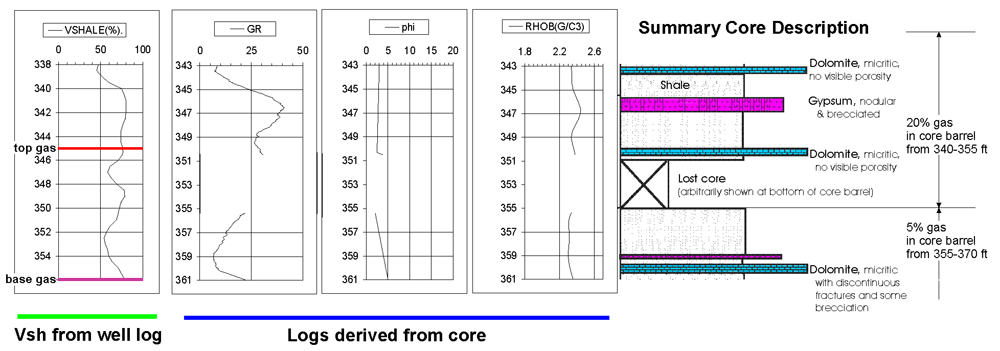
DDV63
Core analysis of “three-finger” interval
(Vshale from well log shown for comparison)
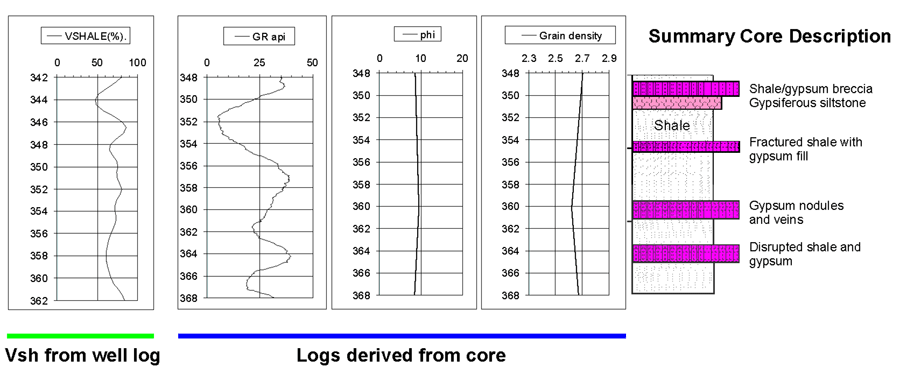
Cross section A-A' through vent wells with sonic logs, flattened on the top of the "three finger" dolomite
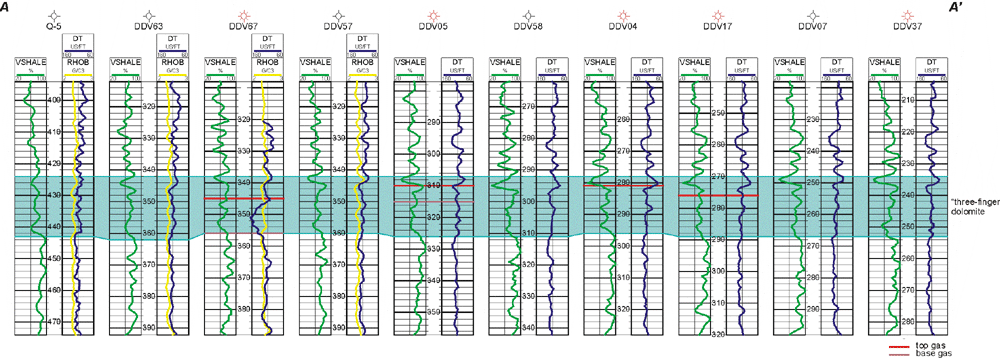
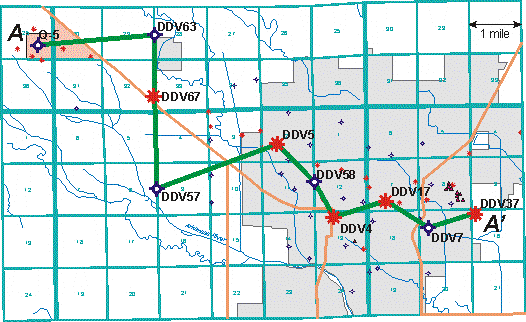
Velocity from Sonic log for wells logged March 2001
(Yaggy Q-5 log shown for comparison)
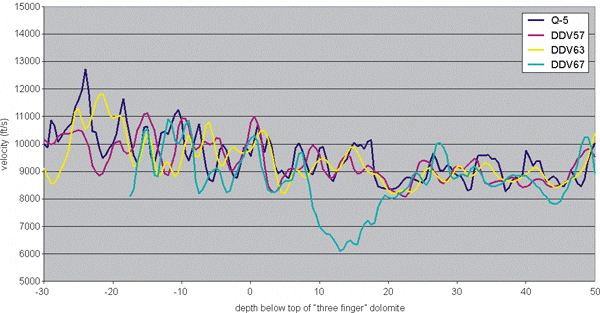
Velocity from Sonic log for wells logged October 2001
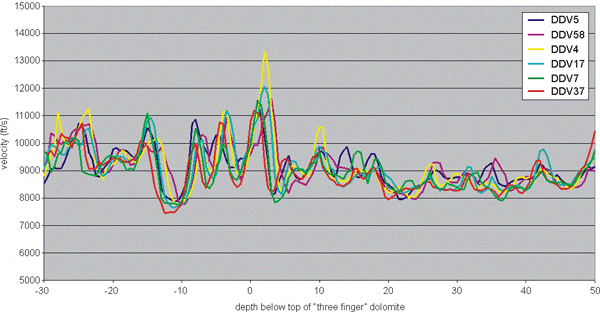
Density log for wells logged March 2001
(Yaggy Q-5 log shown for comparison)
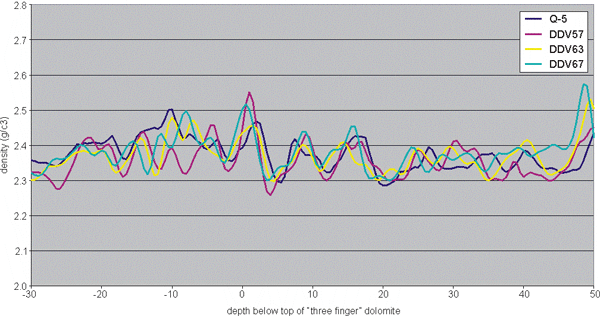
|
|